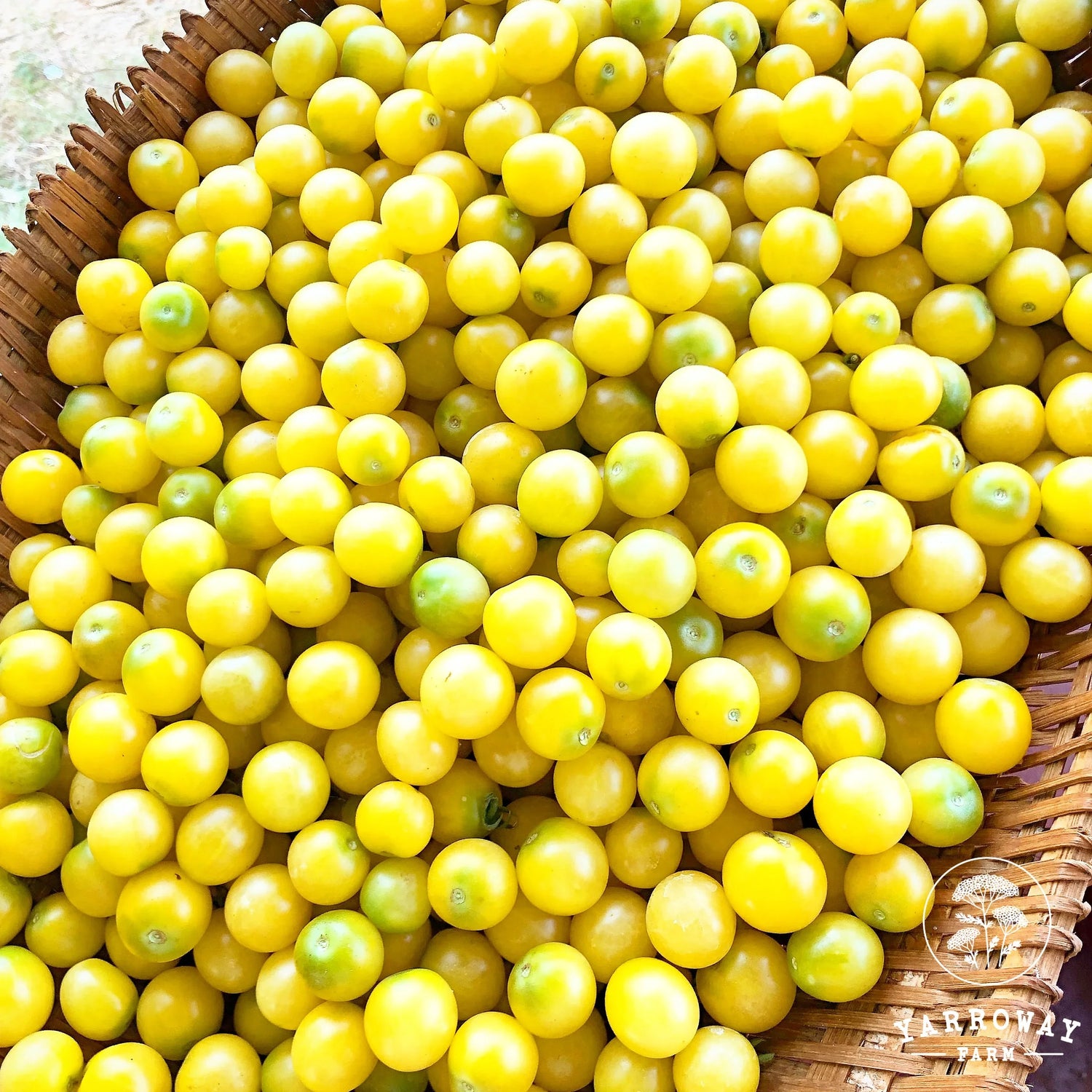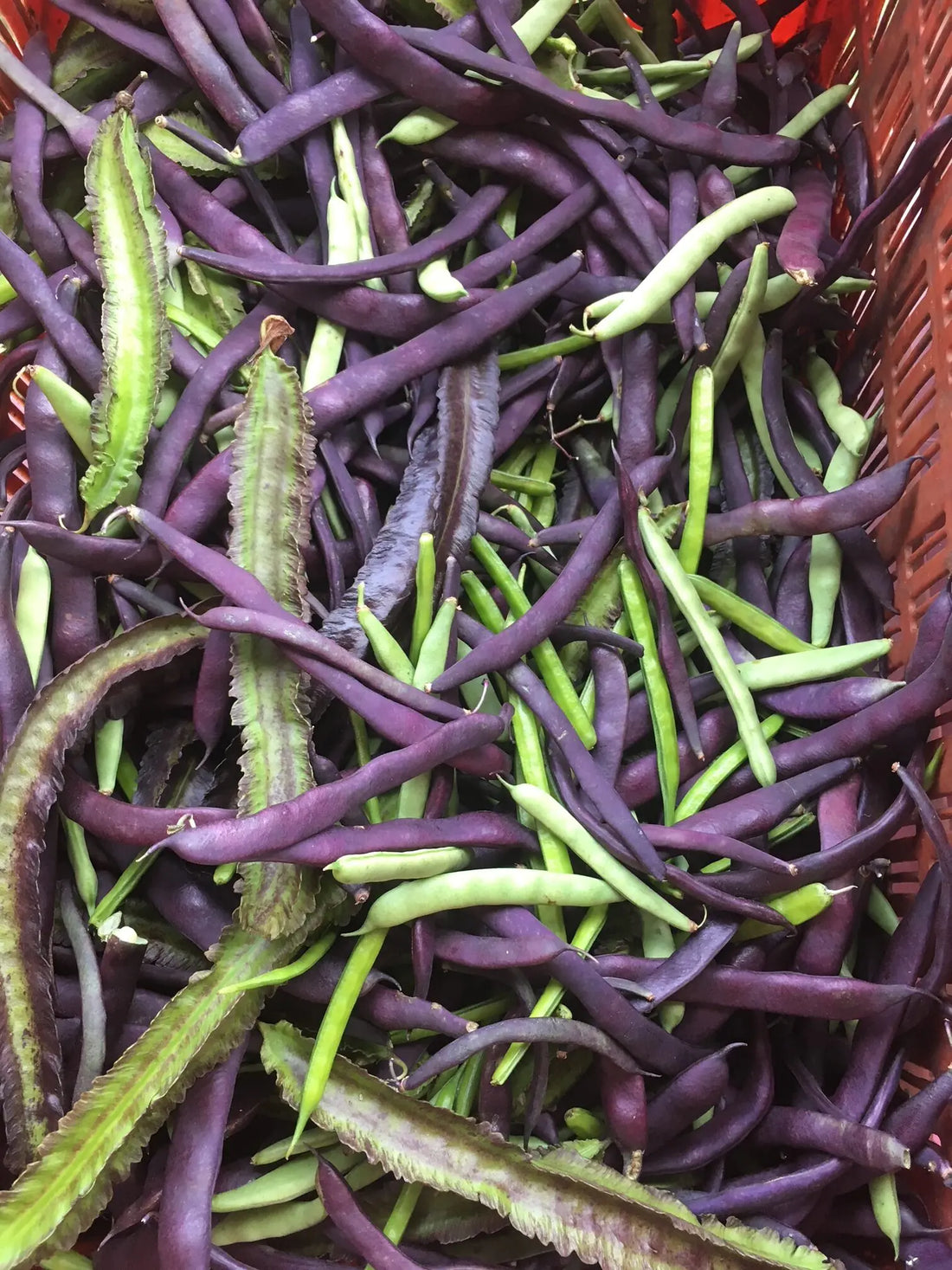A staple crop grown across the world for thousands of years, beans are high in protein and inexpensive to produce. Ancient Native Americans grew beans along with corn and squash in their famous 3 sisters gardens. They prefer growing in warmer weather and soils. Beans are legumes and a beneficial crop to grow because they return nitrogen back to the soil, and don’t demand much nutrition. Grown with good companion cropping patterns, they benefit other crops.
There are two broad classifications of beans, based on their growing patterns:
Pole Beans: They need trellis support to grow, but easy to harvest. Rajma, winged beans, long cowpea, asparagus bean, etc fall into this category. Most beans have foliage that can be supported by a simple wooden trellis. However, varieties with heavy foliage such as the Indian Broad Bean (la-lab/hyacinth) need a bulkier support structure to hold its foliage. Long beans are the best choice for hot climates; they can handle extreme heat. Bush Beans: Versatile and easy to grow, and they don’t need any support. They come is several colors and sizes as well. Soy beans, and other pulses such as moong, cowpea, masoor, etc. also grow in bushes.
Sowing Style: Direct sow outdoors on raised beds or flat areas (bush beans) or next to the trellis (pole beans). Beans are very easy to germinate. Keep in mind that they must have warm weather in order to germinate; cool weather will cause beans to rot in the soil.
Time to Sow: Sow during monsoons so they get a continuous supply of water during the growth phase. Some pole beans grow well when established in Autumn and long beans do well in hot weather. For a summer crop sow them at the tail end of winter when the earth starts warming up.
Plant Spacing: Bush Beans: 6in-1ft (rows 18in apart), Pole Beans: 1ft-2ft apart along the trellis.
Good Companions: Corn, Peas, Carrots, Cauliflower, Cucumber, Marigold, Potatoes, Radish, Sweet Potatoes, Swiss Chard
Bad Companions: Onion, Garlic, Chives, Shallots, Leeks, Beets, Peppers/Chilli, Broccoli
Soil and Cultivation Requirements: Green Beans need full sun, warmth, shelter from wind, and light but fertile soil. Keep the bed well weeded and soil loose.
Irrigation: They need regular watering until they start drying out. Beans can do well under drip or sprinkler irrigation. Use drip irrigation to keep leaves dry and disease free. Plan the irrigation based on what companions you are planting the beans with, how the trellis is placed and how often they need water.
Harvesting and Storing: Continually harvest fresh eating beans that have tender pods to keep plants productive. Snap them off cleanly without pulling or tugging at the plant. Green Beans can be stored green in salt. Beans can be harvested when immature and used like green beans or left on the vine to dry to be used as dry beans such as Rajma, Moong, etc. To dry beans, you just let them ripen, hang the vines upside down in a shed or sundry them, and thresh them before you store them. Long beans should be harvested when beans reach 12-18 inches long. Soy beans are grown just like green beans and can be harvested when pods reach 2-3 inches long or have completely dried. Dried soybeans mature all at once.


